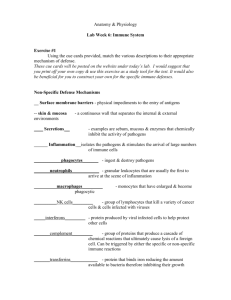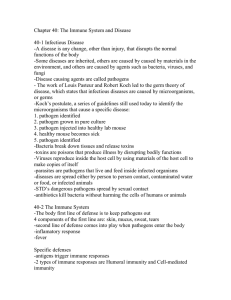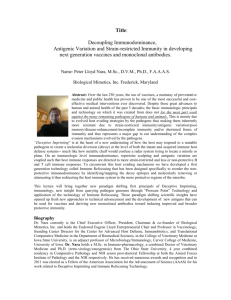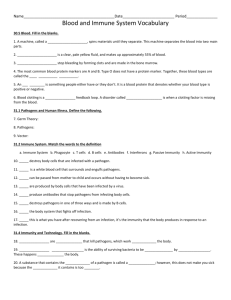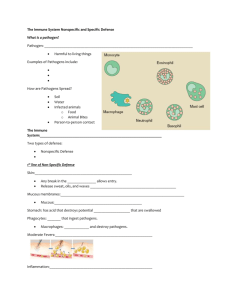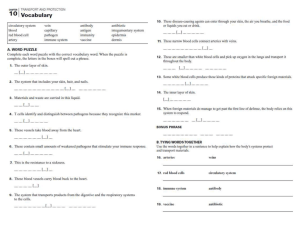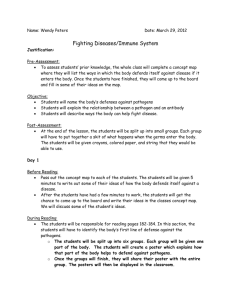Immunity Lab part B
advertisement
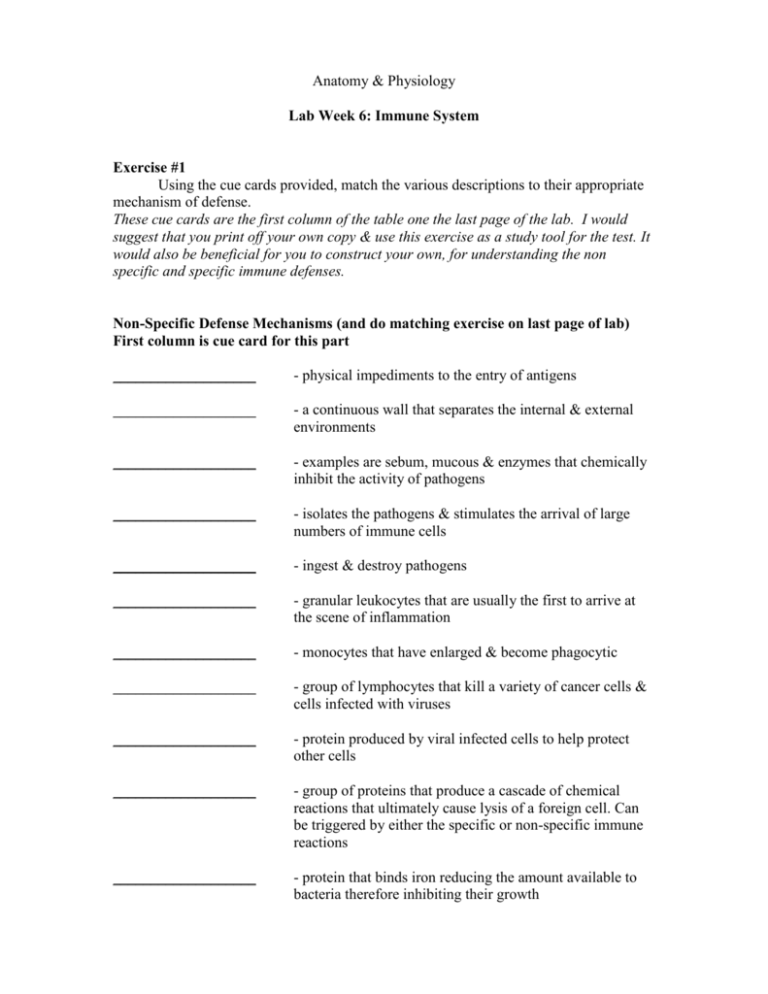
Anatomy & Physiology Lab Week 6: Immune System Exercise #1 Using the cue cards provided, match the various descriptions to their appropriate mechanism of defense. These cue cards are the first column of the table one the last page of the lab. I would suggest that you print off your own copy & use this exercise as a study tool for the test. It would also be beneficial for you to construct your own, for understanding the non specific and specific immune defenses. Non-Specific Defense Mechanisms (and do matching exercise on last page of lab) First column is cue card for this part ___________________ - physical impediments to the entry of antigens ___________________ - a continuous wall that separates the internal & external environments ___________________ - examples are sebum, mucous & enzymes that chemically inhibit the activity of pathogens ___________________ - isolates the pathogens & stimulates the arrival of large numbers of immune cells ___________________ - ingest & destroy pathogens ___________________ - granular leukocytes that are usually the first to arrive at the scene of inflammation ___________________ - monocytes that have enlarged & become phagocytic ___________________ - group of lymphocytes that kill a variety of cancer cells & cells infected with viruses ___________________ - protein produced by viral infected cells to help protect other cells ___________________ - group of proteins that produce a cascade of chemical reactions that ultimately cause lysis of a foreign cell. Can be triggered by either the specific or non-specific immune reactions ___________________ - protein that binds iron reducing the amount available to bacteria therefore inhibiting their growth Exercise 2: Write the class of immunoglobulin (Ig) beside each description. ____ the first antibody to be secreted after initial exposure to an antigen ____ found in secretions such as mucous, saliva, tears & breast milk ____ the most abundant Ig & the only one to cross the placenta ____ antigen receptors found on the B cells & activate the B cells (plasma cells) to make antibodies ____ involved in allergic reaction Exercise 3: Describe how vaccines work? Exercise 4: Define & give examples of the following: a) artificially acquired active immunity b) artificially acquired passive immunity c) naturally acquired active immunity d) naturally acquired passive immunity Match the card on the right with the correct description on the left Surface membrane barriers ingest & destroy pathogens physical impediments to the entry of antigens Skin & mucosa Inflammation examples are sebum, mucous & enzymes that chemically inhibit the activity of pathogens group of lymphocytes that kill a variety of cancer cells & cells infected with viruses Phagocytes protein that binds iron reducing the amount available to bacteria therefore inhibiting their growth Secretions Neutrophils Macrophage Natural killer cells (NKC) Interferon granular leukocytes that are usually the first to arrive at the scene of inflammation group of proteins that produce a cascade of chemical reactions that ultimately cause lysis of a foreign cell. Can be triggered by either the specific or non-specific immune reactions protein produced by viral infected cells to help protect other cells isolates the pathogens & stimulates the arrival of large numbers of immune cells monocytes that have enlarged & become phagocytic Complement Transferins a continuous wall that separates the internal & external environments
